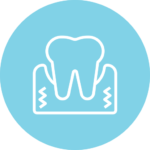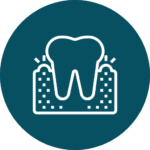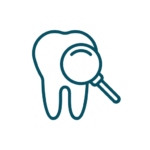


ESTABLISHING PROTOCOL FOR YOUR OFFICE
When establishing a periodontal protocol for your office, it is important for all providers to understand that bleeding with minimal provocation through periodontal probing, or reports of bleeding by patients during routine home care, i.e., brushing and flossing, is an indication of inflammatory response associated with active periodontal or gingival infection. The presence of inflammation alters the patient’s health status, moving them from health into a diseased state. More bleeding points indicate the advancing severity of disease and necessitate therapeutic intervention provided by your dental team. In addition to home care recommendations, the patient should be placed on a treatment protocol which is initiated with appropriate diagnosis of their disease process. Both gingivitis therapy and periodontal therapy should begin with salivary diagnostic testing so that the patient and provider can understand how to best proceed with treatment.
GINGIVITIS
If the inflammation is localized to the tissue without denotation of bony changes, gingivitis therapy is recommended. Gingivitis therapy includes repeated biofilm disruption through supragingival instrumentation, scaling, polishing and/or air polishing. These patients should be reappointed within six weeks to ensure proper plaque removal is achieved with the patient’s home care routine until resolution of the inflammation has occurred.


PERIODONTITIS
If bone loss is observed in addition to tissue inflammation the patient will need periodontal therapy which includes scaling and root planing, and can also involve therapeutic rinses, chemotherapeutic agents, and possibly laser treatment of the gum tissue.
REEVALUATION
If inflammation persists at the reevaluation appointment, additional salivary testing is performed, and the patient is treated in the office for disruption of the biofilm until resolution of inflammation has occurred. Additional antibiotic or antiviral therapy may be prescribed if indicated by salivary test results. Once treatment is complete, re-evaluation six weeks after treatment has occurred, and the patient’s inflammation is below five bleeding points, a recall interval is established with the patient. Recall is more frequent if the patient’s individual risk is elevated.


RECALL INTERVAL
Once health is re-established, these patients may be placed on a recall interval that is contingent upon their risk factors for reactivation of disease including home care challenges, pathogen load indicated from saliva testing, and/or systemic disease.
